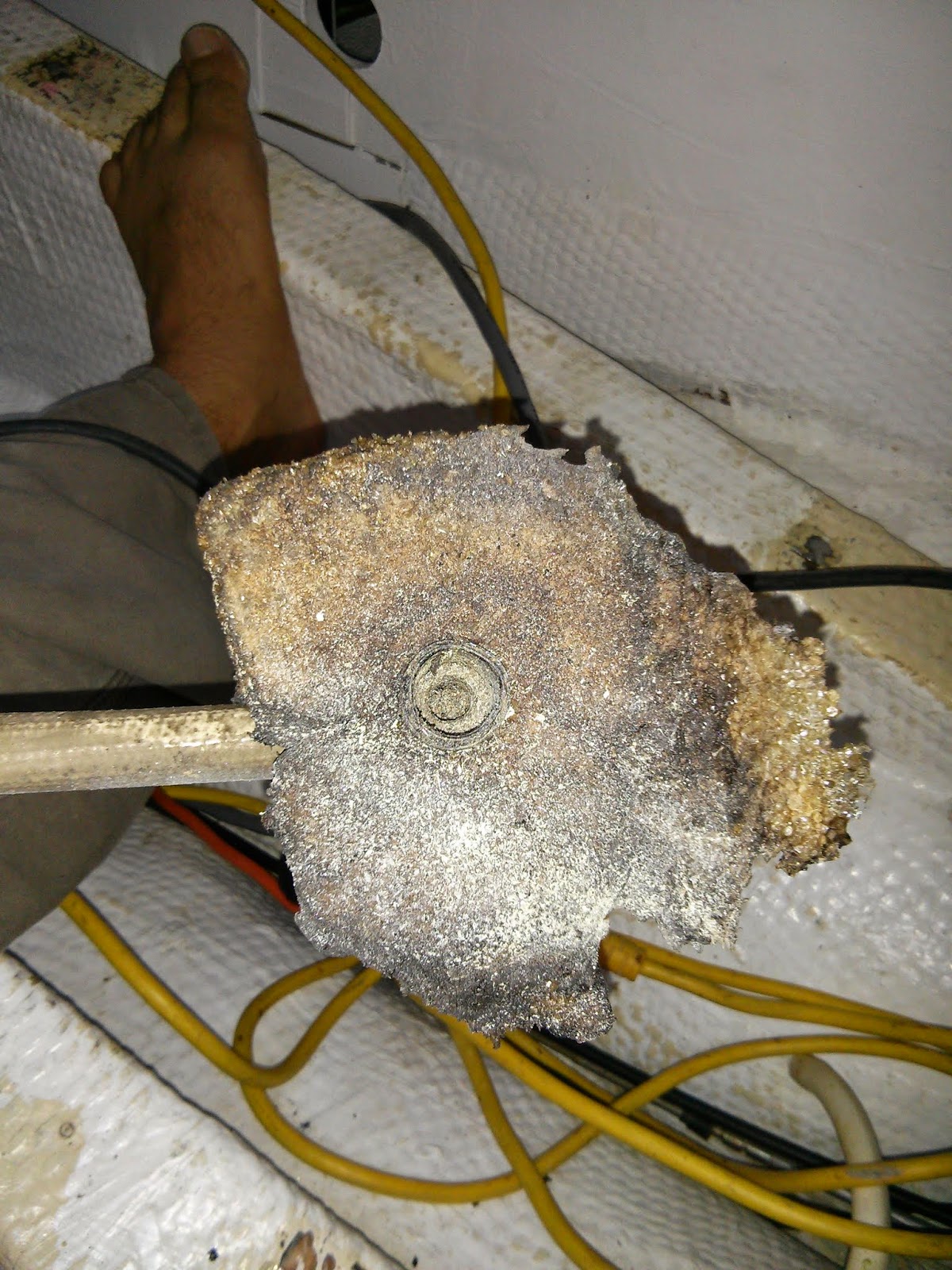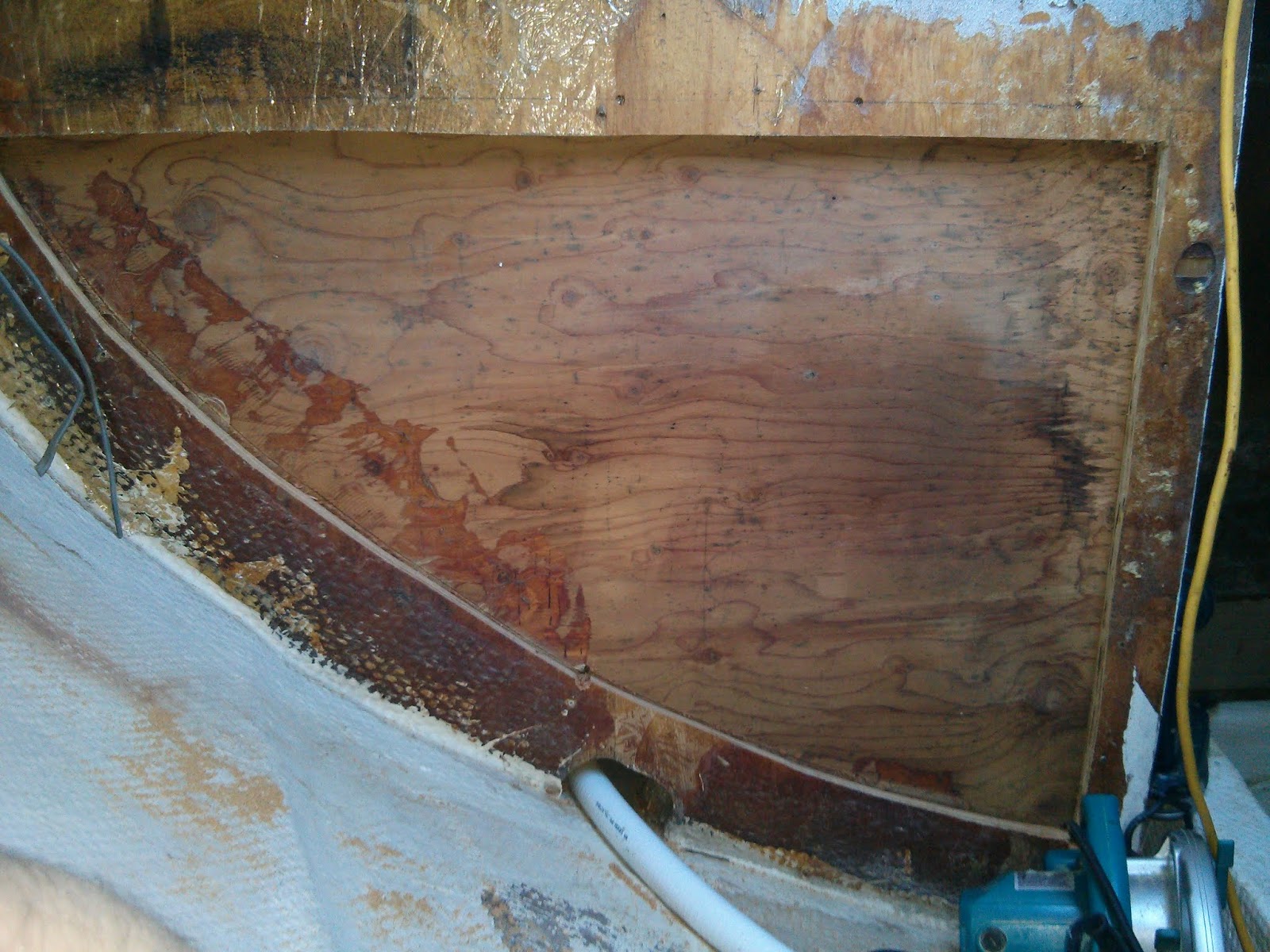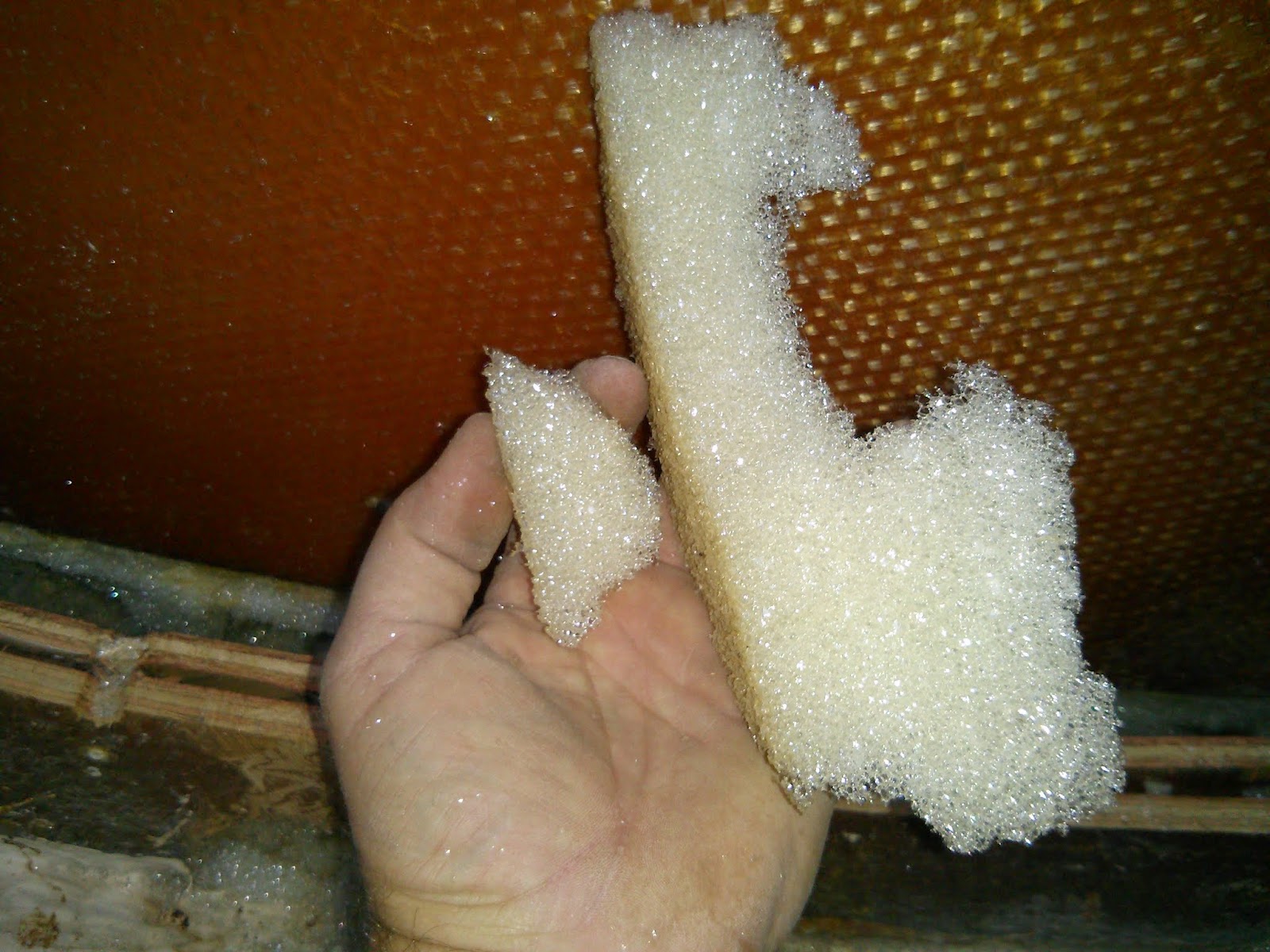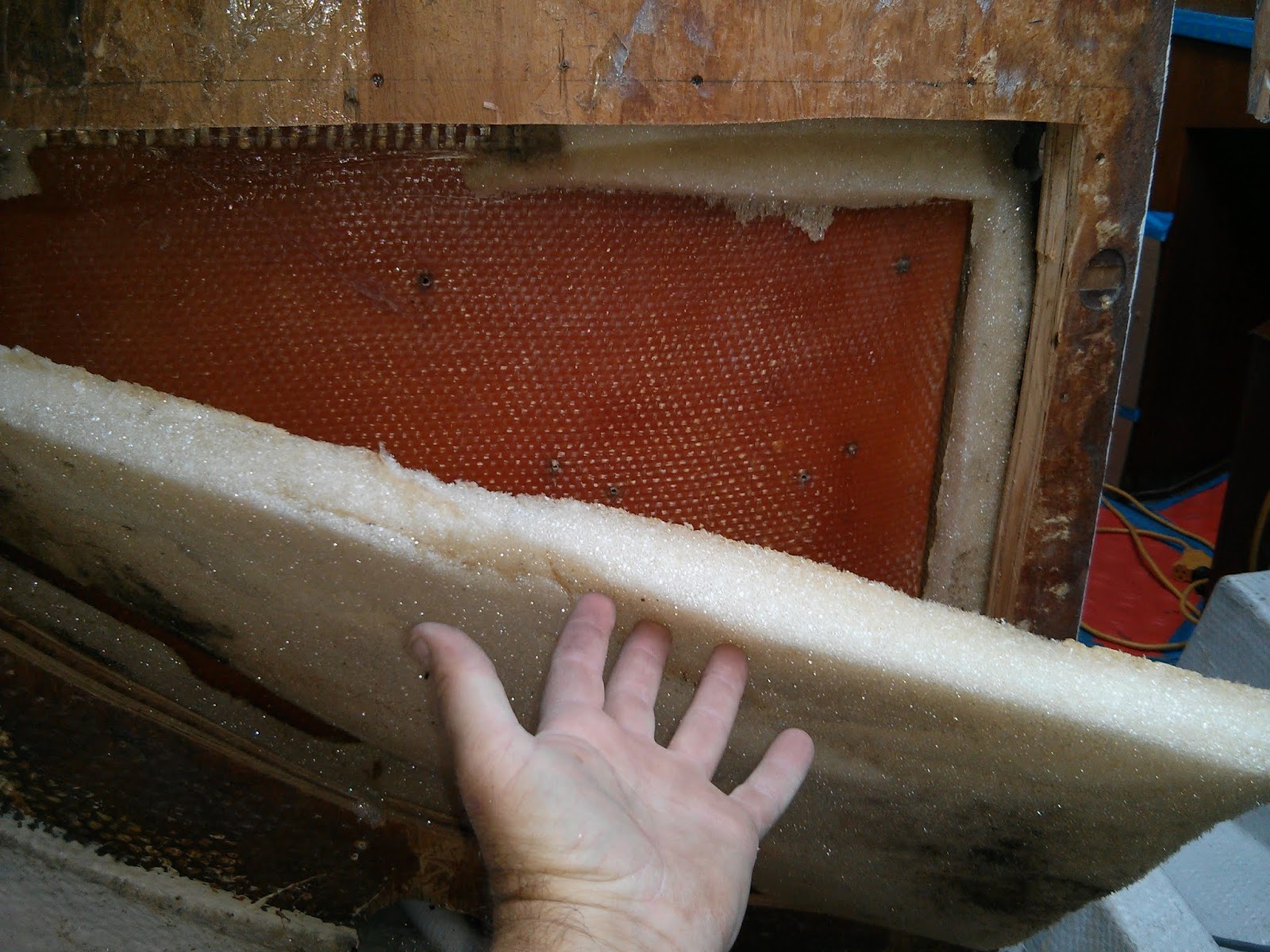Part One – Removing
the Original Ice Box
Prior to cutting any cloth for tabbing, we filled the gap
between the two aft bulkheads with expanding foam.
 |
| Adding expanding foam between the two aft bulkheads. |
Next we filled the voids under the aft bulkhead, mid-ship panel, and
forward panel with expanding foam.
 |
| Adding foam under the aft bulkhead, mid-ship panel, and forward panel. |
After cutting away the excess foam, we dry fit sections of
1708 cloth tabbing along the various surfaces.
 |
| Dry fitting 1708 cloth between the hull and vertical panels in the ice box compartment. |
The forward and mid-ship panels have one layer of
cloth. The cut out in the fore and aft bulkheads will
allow the ice box drain, bilge pump discharge hoses, and the propane line for the
stove to pass under the ice box.
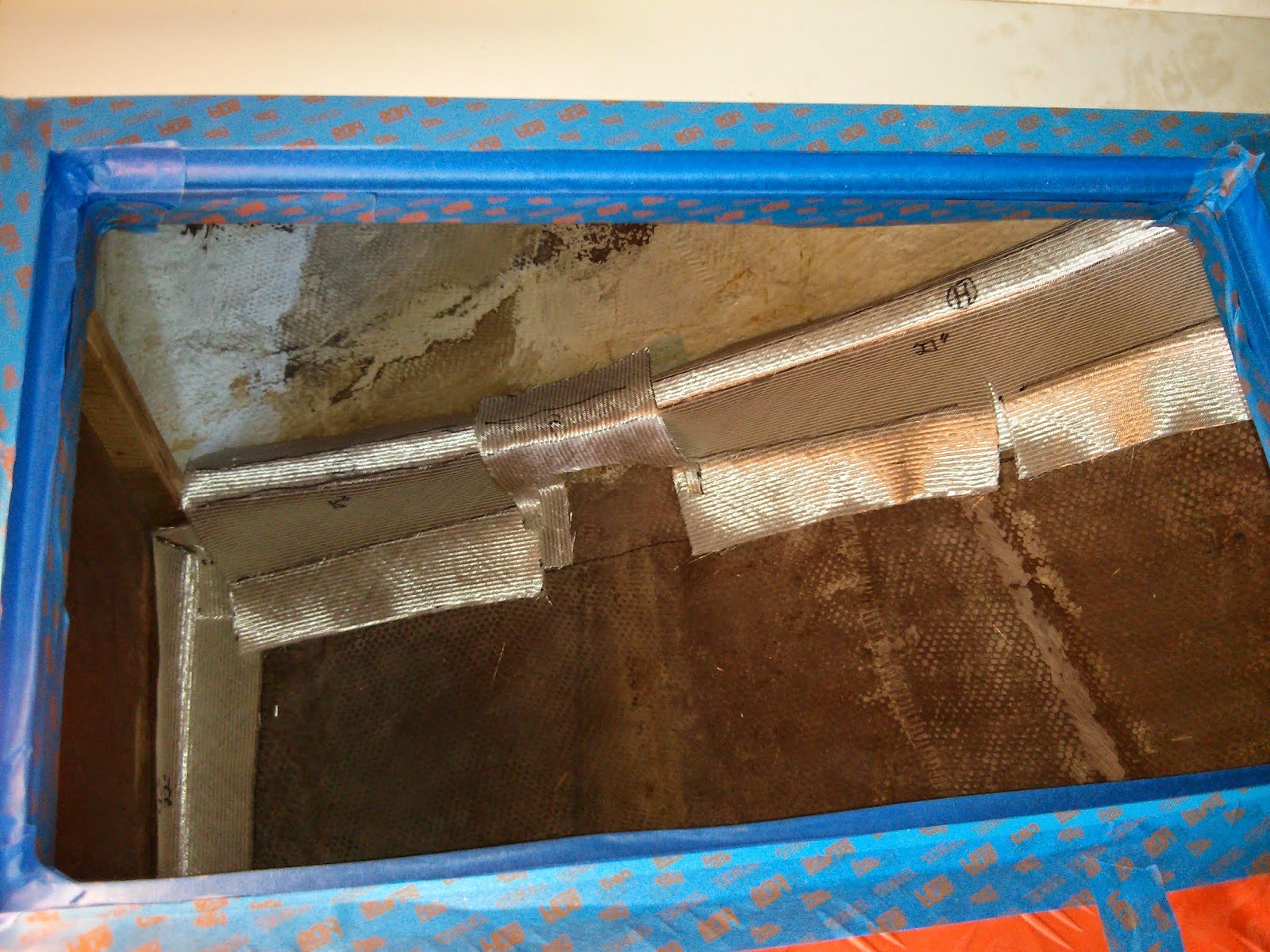 |
| Multiple layers of cloth on the double bulkhead aft. |
We plan to capitalize on the discovery of the double
bulkhead by laminating the two ½” bulkheads together to form a single stout rib along the hull. The achieve the additional strength this area received two to three layers
of cloth.
 |
| Anne suited up for wetting out fiberglass cloth. |
Wetting out and laying up large sections of fiberglass is
always a team effort.
 |
| Looking down through the ice box lid at the heavy lay-up over the double bulkhead. |
Another sign of Morgan’s hasty construction is the lack of
bulkhead on the inside of the cockpit combings.
 |
| Morgan did not extend the bulkhead between the cockpit locker and the galley did into the inside of the cockpit combing. |
While we were in the neighborhood we filled the opening at the top of the bulkhead between the cockpit
locker and the galley with a ½” The plywood
insert . We also added tabbing between
the bulkhead and the underside of the deck. Our additions should add strength to the hull and deck.
 |
| Plywood insert extends bulkhead. Tabbing bonds bulkhead to deck and combing. |
Ultimately we plan to re-mount the Alder-Barbour condenser unit
in this vicinity along with a vent into the galley for circulating air around
the condenser.
TO BE CONTINUED…
Here is a link to additional images and notes – Ice
Box Rebuild Photo Album



